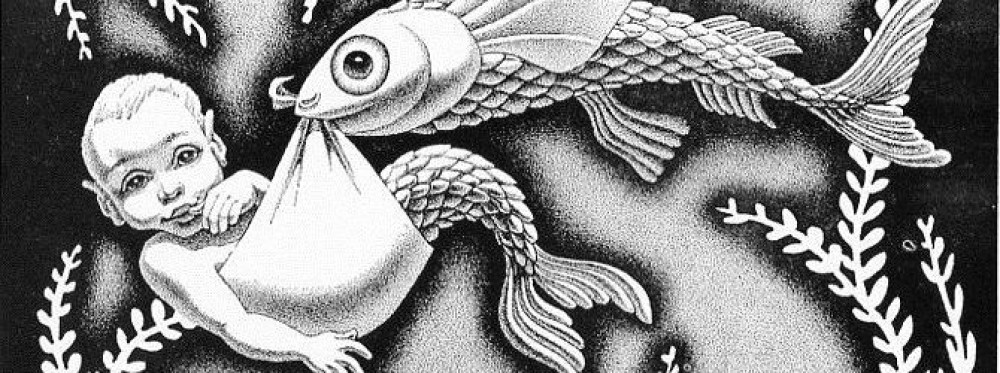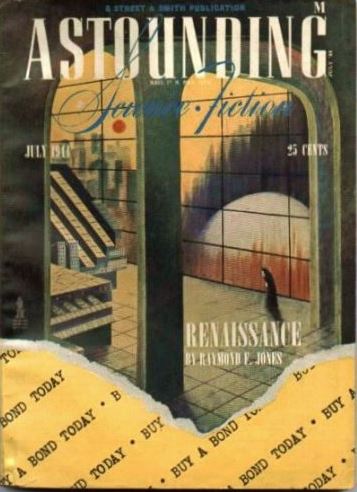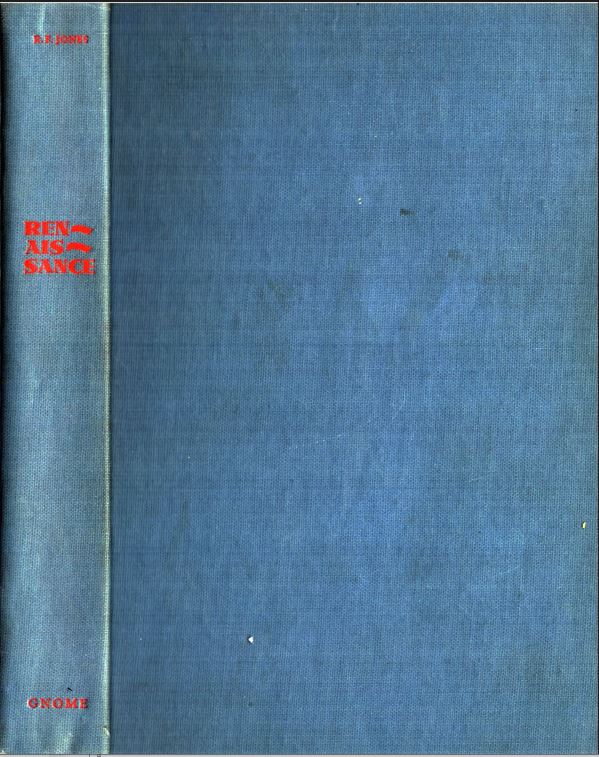Comments
Raymond Fisher Jones (1915-1994) was one of the quiet journeymen who reliably filled out pages of magazines without ever quite bursting into a star, so quiet that you won’t find out what his middle initial stands for in CURREY.
He discovered science fiction at the age of twelve, when he read the reprint of H. G. Wells’ “War of the Worlds” in Hugo Gernsback’s Amazing Stories. Gernsback’s obsession with radio was an equal influence. Jones became a radio engineer and went through various allied jobs until he did war work with Bendix in Baltimore. His career has many parallels with that of George O. Smith.
Not least along those is that he took up writing sf at about the same time and sold his first story to John Campbell’s Astounding a mere year earlier. Another twenty or so appeared before Renaissance, his first hardback. By that time Jones had decided to try full-time writing.
Never prolific, only a half dozen novels were published by the end of the 1950s although more than forty shorter works accompanied them. After that his sales were sporadic. His greatest success was the expansion of three Thrilling Wonder Stories novelettes into the novel This Island Earth, adapted into the 1955 Technicolor movie of the same name. FindaGrave.com says that Jones supplemented his fiction with “hundreds of magazine articles.” It also says that This Island Earth “was one of the earliest science fiction movies ever made,” so a grain of salt may be needed for any statement there.
Renaissance was one of the subjects of an extraordinary Russian propaganda attack on American science fiction. The fanzine Fantasy Review reprinted part of the piece, “The World of Nightmare Fantasies,” by Victor Bolkhovitinov and Vassilij Zakhartchenko, published in the Literaturnaya Gazyeta, in its December 1948-January 1949 issue.
This tale, monstrous in its openly fascistic tendency, appears in the American magazine Astounding, under the optimistic title of “Renaissance.” Jones’ fascist revelations are not an isolated instance in American science fiction literature. There are numerous such examples under the brightly colourful covers which enterprising publishers throw on the market in millions of copies. From their pages glares a fearful world, apparently conceived in the sick mind of an insane, a world of nightmare fantasies. Miasma, mental decay, fear of to-day and horror of the future: all these innumerable ills of capitalism are clearly reflected. [copied exactly as in original]
Gnome Notes
The dust jacket calls it “A Novel of Mankind on Two Worlds,” but the title page reads “A Science Fiction Novel of Two Human Worlds.”
Kirkus Reviews gave the expected publication date as March 15, 1951.
Reviews
Unsigned, Startling Stories, November 1951
Good fun combined with some moments of real horror and excitement and a fat handful of provocative ideas for spice.
Fletcher Pratt, Saturday Review, July 28, 1951
In spite of the fact the characters are unidimensional and there seems to be something happening every moment, the writing is heavy and turgid, and the author has taken little care to work out the scientific and the political logic of his binary worlds.
Contents and original publication
• Chapters 1-29 (Astounding Science Fiction, July, August, September, and October 1944).
Bibliographic information
Renaissance, by Raymond F. Jones, 1951, copyright registration date 15Apr51, Library of Congress Catalog Card Number not given [retroactively 51-10436], title #13, back panel #13, 255 pages, $2.75. 4000 copies printed. Hardback, dark blue cloth, spine lettered in red. Dust jacket designed by David Kyle. “FIRST EDITION” on copyright page. This book designed by David Kyle and printed by The Colonial Press, Inc. Manufactured in the United States of America. Title page and copyright registration add “A Science Fiction Novel of Two Human Worlds;” jacket adds “A Novel of Mankind on Two Worlds.” Back panel: 10 titles. Gnome Press address given as 80 East 11th St., N.Y. 3.
Variants
None known.
Images





